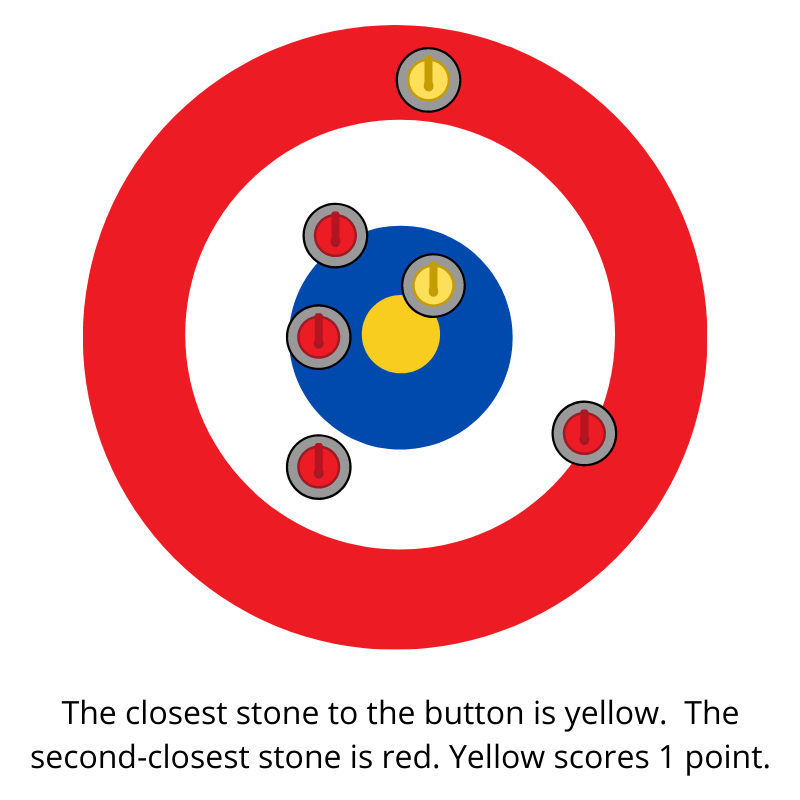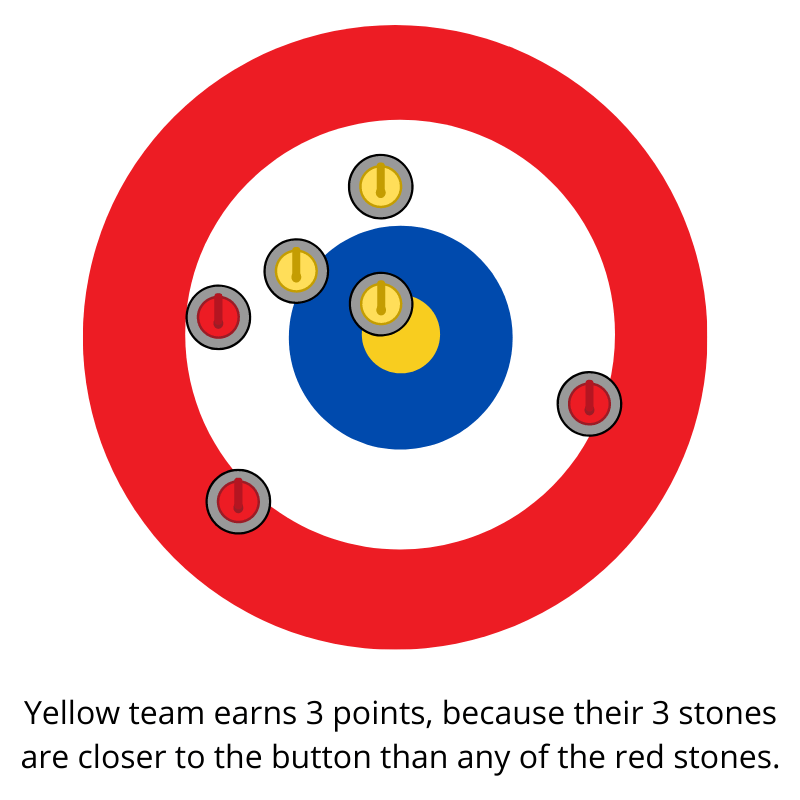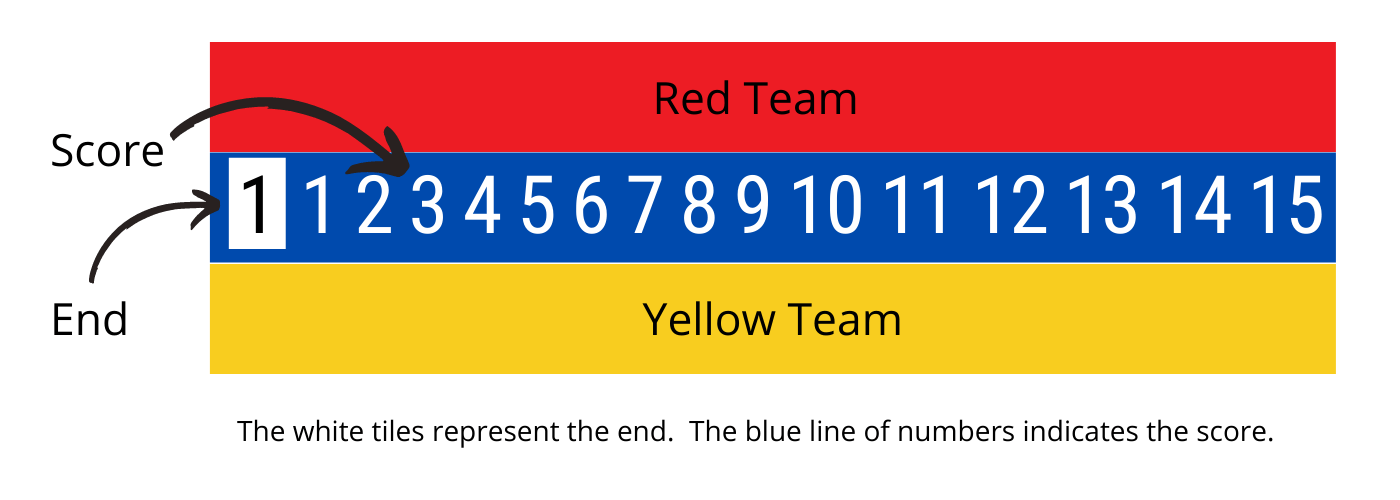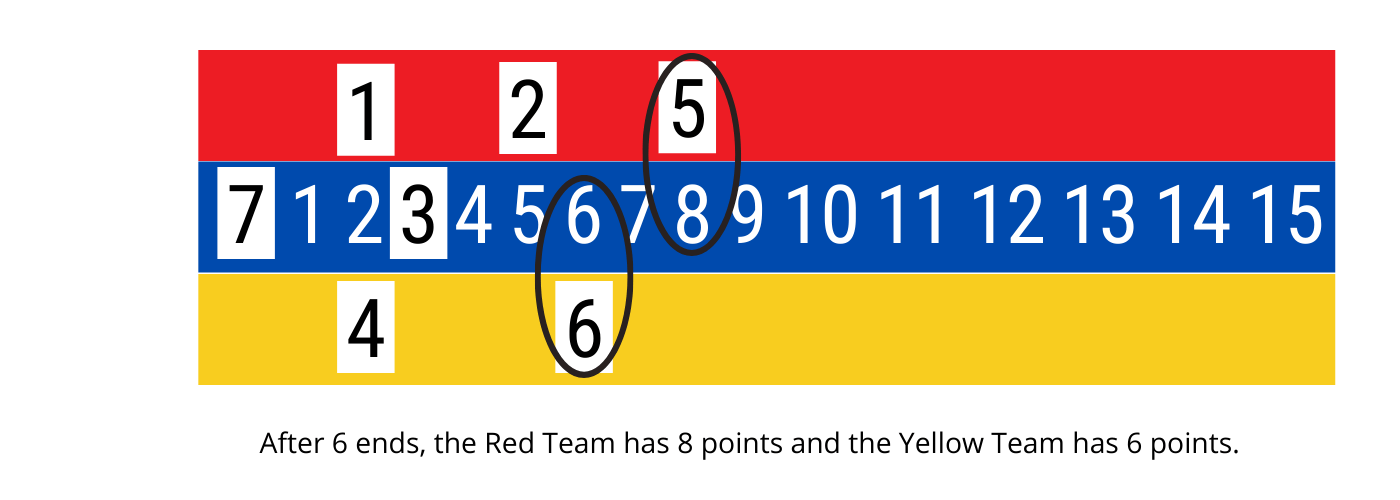The sport of curling dates back to the 1500’s where the game was played on frozen ponds and lochs in Scotland. It has been called “chess on ice” due to the strategy involved in beating one’s opponent. The sport of curling can be enjoyed by people of all ages – from elementary school kids to those well into their retirement years.
Our friends to the north at the Canadian Curling Association created this 2-minute introduction to curling and have been kind enough to allow us to share it on our website. Those Canadians, they really are nice!
Basic Terminology
The ice field on which the game is played is called the sheet. It is approximately 150 feet long. Targets on either end are called the house. The center of the house is called the button. The hack is the starting block for the curler. A stone must be released before the first hog line and must cross the second hog line in order to be considered in play.

A curling team has 4 members: the skip, the vice skip (also known as the third), the second, and the lead. The skip controls the strategy of the game by calling the shots for his or her teammates. The skip will use the broom to show the aiming point, call the turn (the direction in which the person delivering the stone should rotate the stone before releasing it), and call the weight (how fast or slow to deliver the stone).
Sweeping is used to help control the distance and the amount a stone will curl. The skip calls the sweep with the assistance of the person who releases the stone and the sweepers.
A game has 6 – 10 innings, known as ends. A curling team is referred to as a rink (e.g. the Smith Rink beat the Jones Rink). A curling tournament is called a bonspiel. Most bonspiels are equal parts competition and hospitality. A wise person once said, “don’t let curling get the way of a good bonspiel.”
Scoring
Only one team can score points on an end. After all stones are thrown, points are tallied. For every stone in the house that is closer to the center (called “the button”) than the opponent’s stones, a point will be scored.
If there are no stones in the house at the conclusion of an end, it is called a “blank end” and zero points are scored. The maximum number of points that can be earned in an end is 8. Scoring an “8-Ender” is rare, sort of like a hole-in-one in golf. The vice skips will agree on the score before any rocks are moved. If necessary, a specialized measuring device will be used on close calls.
Here are some examples:


Reading the Scoreboard
It can take some practice for new curlers to learn how to read the scoreboard.
After the completion of each end, a tile is hung for the team who scores the points. Scoring is cumulative, meaning that the points from each end are added to the points from the previous end. The white tiles represent the end that has been played and the blue line of numbers is the score.

To read a team’s score, look across to the furthest number that has a tile above or below it. In the example below, after 6 ends of play, the Red team has 8 points and the Yellow team has 6 points.

Once you know how to read the scoreboard, you can see that it offers an end-by-end recap of the game. You can look at each of the white tiles to know what happened in that end.
- 1st End: the Red team scored 2. You know that because the “1” tile was hung in the red line above the score of 2.
- 2nd End: the Red team then scored 3 more, bringing their total to 5.
- 3rd End: the third end was “blanked” meaning that there were no rocks in the house, so no points were awarded.
- 4th End: the Yellow team scored 2 points.
- 5th End: Red scored 3 more points, bringing their total to 8.
- 6th End: Yellow scored 4 more points, bringing their total to 6.
Curling 101 Videos
The Canadian Curling Association has many helpful videos on their YouTube channel. Here are some to get you started.
Basics of Delivery and Sweeping
Getting Started for Adults
Youth Curling - Series of 7 Videos
Go to the Canadian Curling Association’s YouTube channel for even more curling videos.
If you are interested in learning the sport of curling, the Wausau Curling Club offers both public and private Learn-to-Curl events.
